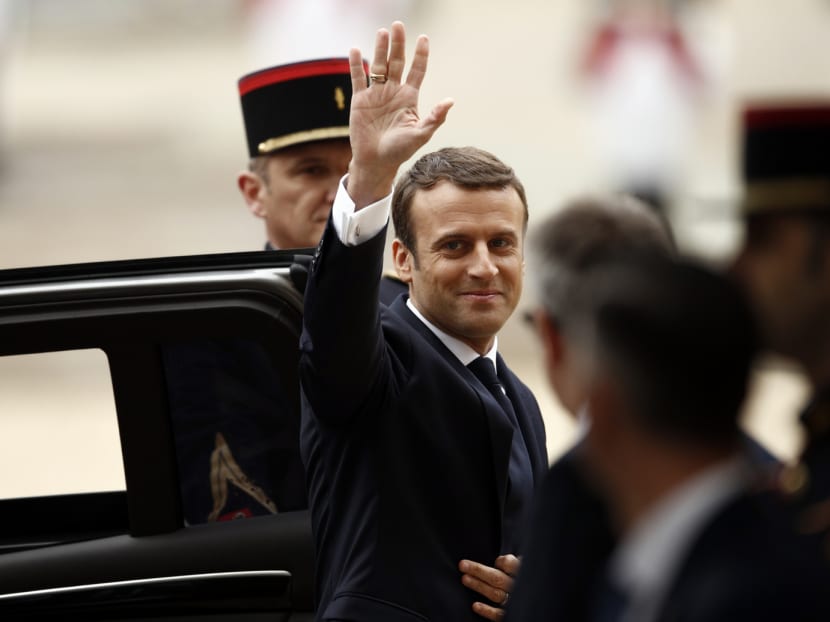Surge in market optimism leaves gold undervalued
Equity markets have been on a steady climb since round one of the French presidential election.

Mr Emmanuel Macron before his inauguration ceremony as French President, at the Elysee Palace in Paris yesterday. His victory assured markets of a Eurocentric leader. Photo: AP
Equity markets have been on a steady climb since round one of the French presidential election.
Events had played out exactly as the polls forecasted, with Mr Emmanuel Macron in the lead, and Ms Marine Le Pen trailing slightly. Investors welcomed the predictable outcome, having recently gone through the harsh shocks of the wins for Brexit and Mr Donald Trump. Round two further bolstered their confidence. Mr Macron’s victory assured markets of a Eurocentric leader, and departure from divisive populist politics.
Brimming with renewed hope, benchmark indices such as Germany’s DAX and the United States’ S&P 500 swelled to all-time highs. The return of risk-on sentiment, however, left safe-haven assets, such as gold, deflated. The precious metal plummeted over US$60 (S$84) during the same span of time.
Gold’s steep decline cannot be entirely attributed to French politics, however. A hawkish US Federal Reserve has put downward pressure on the metal as well. In May’s Federal Open Market Committee (FOMC) statement, the central bank put up a strong front. Brushing off a slowdown in first-quarter growth as “transitory”, the FOMC held firm on plans to hike interest rates gradually. Markets echoed the confidence and sold off precious metals, which are disadvantaged by a rising US dollar.
However, it was a stronger than expected non-farm payrolls report that finally tipped markets. In April, the labour market added 211,000 jobs, compared with estimates of just 190,000. Unemployment also fell to a 10 year low of 4.4 per cent.
Traders priced in the positive data immediately, as the implied probability of a June hike, based on Fed Funds futures, soared to 78.5 per cent.
Both political and economic victories have allowed investors to breathe a sigh of relief. Some optimism in the future is indeed warranted. Yet the extreme enthusiasm with which markets reacted may have been somewhat overdone. Despite threats from North Korea and uncertainty in Russia’s loyalties, investor confidence has remained unwavering.
In recent trade, the Chicago Board Options Exchange Volatility Index, commonly used as a gauge of market fear, registered its lowest levels since 2006. The measure not only suggests that markets have turned a blind eye to lingering geopolitical disputes, but also hints at overconfidence.
The US economy is also not out of the woods. Besides GDP growth, inflation is showing weakness as well. The core Personal Consumption Expenditures price index, a key indicator of the Fed, slipped 0.1 per cent in March. If further declines follow, the US central bank would be hard-pressed not to delay its rate hike agenda.
While investors have been eager to bury their worries, global markets are not yet free from trouble.
An increasingly one-sided outlook, and resulting over-commitment to risky markets, can leave one vulnerable. The now-neglected gold could see revived demand once the rest of the crowd comes to the same realisation.
ABOUT THE AUTHOR: Bryan Lum is a strategist with Phillip Futures.





